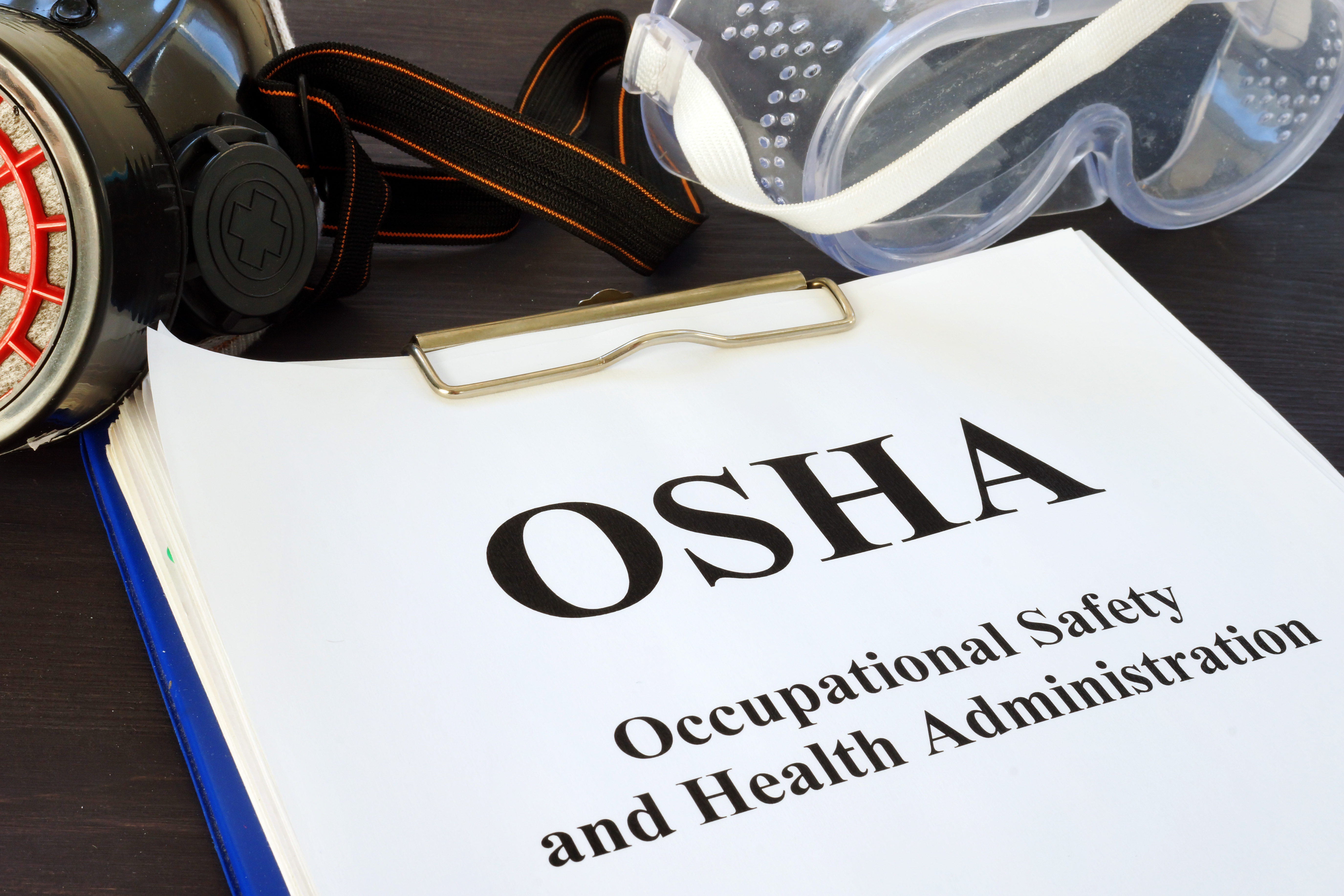OSHA Standards
OSHA Floor Marking Guidelines and Color Codes

The Occupational Safety and Health Administration (OSHA) is the government organization that’s responsible for regulating workplace safety. OSHA floor marking guidelines, for example, are designed to help maximize worker safety by making it easy for them to identify potential hazards.
OHSA Floor Marking Requirements
In OSHA Standard 29 CFR 1910.176(a), employers are directed to ensure that all aisles, passageways, and walkways are appropriately marked. Some workplaces may find painted lines to be ideal, while others may find painted lines to be unsuitable for the regular working conditions of the area.
To be in compliance, your workplace must have markings that are clearly visible, easily understandable, and suitable to the unique requirements of that specific space. These markings should instantly provide all necessary operational information for ensuring a safe work facility.
OHSA Color Code Guide
Under CFR 1910.144(a), OSHA provides guidance on the use of the colors red and yellow for marking physical hazards. However, for delineating aisles and passageways, an official interpretation of CFR 1910.22(a) states that marking lines can be of any color “so long as they clearly define the area considered as aisle space.”
Yellow and Yellow-on-Black Floor Markings Indicate: Caution
Identified as the basic color for indicating “Caution,” yellow is used for marking hazards that a person could strike against, or that could cause stumbling, falling, tripping, trapping, etc.
Red and Red-on-White Floor Markings Indicate: Fire
OSHA instructs employers to use red as the basic color for identifying fire protection equipment and apparatus. This may include fire alarms, extinguishers, exits, and the locations containing pumps and hydrants.
Black, White, or Black-on-White Floor Markings Indicate: Boundary
Floor tape that is black, white, or a combination of the two, is commonly used to identify safe boundaries, such as stairways, traffic aisles, crossings, etc.
Green, White, or Green-on-White Floor Markings Indicate: Safety
Floor markings that indicate safety typically come in green, white, or a combination of the two. These may be required over safe exits, as well as at locations where people can find first aid and safety equipment, such as an eye wash station.
Tips For Floor Marking
The following are typically considered best practices for safety markings:
- Use the best solution for your specific space;
- Place the markings in locations that maximize their visibility;
- Use colors as directed and in a consistent manner;
- Regularly assess the markings for wear and tear;
- Replace markings consistently to ensure they remain at optimal visibility and clarity;
- Train employees on the proper use and interpretation of floor markings;
- Use floor markings in conjunction with a complete and well-considered safety plan.
OSHA Standards for Aisle Width
In an official interpretation of OSHA standard CFR 1910.22(b), it’s stated that the recommended width of aisles is at least 3 feet wider than the largest equipment to be utilized, or a minimum of 4 feet – whichever is greater. Storage room aisles containing flammable and combustible liquids should be at least 3 feet wide, and emergency exit access should have a minimum width of 28 inches.
OSHA’s general requirement for aisles and passageways is that “sufficient safe clearances” must be provided where mechanical equipment is used. A good average is 4 feet, but the width will vary depending upon how the aisle is utilized in the workplace. For example, aisles used for forklift trucks or other mechanical equipment will need to be wider than aisles for pedestrian traffic.
What Size Floor Marking To Use
The recommended width of aisle marking tape varies from 2 inches to 6 inches. Therefore, any width of 2 inches or more is considered acceptable, though 4 inches is the most popular as a highly visible, cost-effective option.
Technical Data for Our Floor Marking Tape
Application Temperature: 65* degrees to 90 degrees Fahrenheit (18-32 Celsius)
Service Temperature: -40° to 130° F (-40° to 54° C)
Normal Thickness: 3 mils to 109 mils
*Please Note that some products may be applied at 0 degrees F.
How to Find OSHA Compliant Floor Markings
At ifloortape.com, we have everything you need for maintaining OSHA compliance. If you have any questions about OSHA floor marking guidelines and color codes, contact our team today.

 US Dollars
US Dollars
 Canadian Dollar
Canadian Dollar
 Mexican Peso
Mexican Peso
 Brazilian Real
Brazilian Real
 Colombian Peso
Colombian Peso
 Chilean Peso
Chilean Peso
